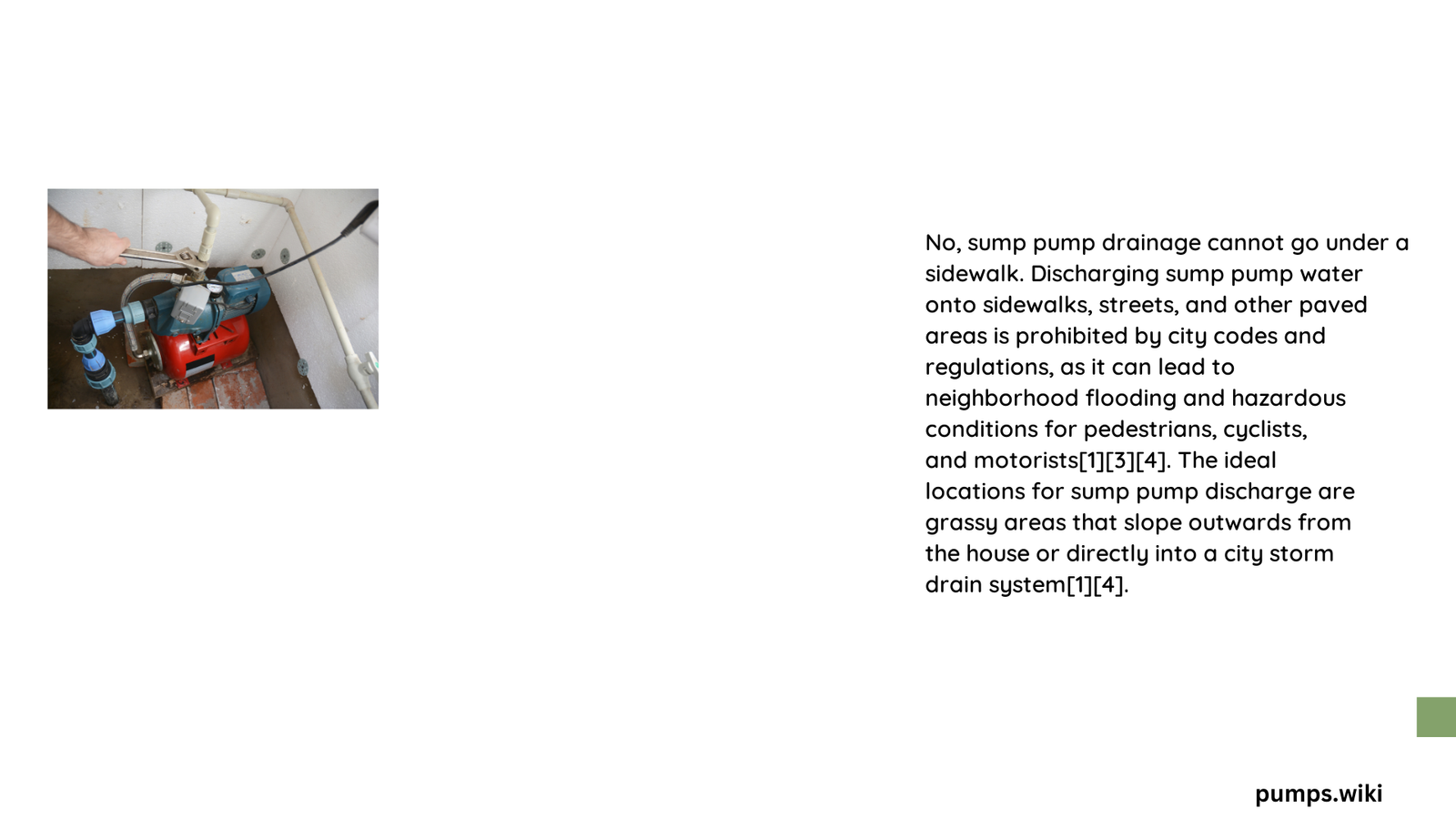Homeowners often face challenges with sump pump drainage, particularly when considering routing water beneath sidewalks. While technically possible, this approach frequently violates local municipal codes and can create significant legal and structural complications. Understanding the proper methods for sump pump water discharge is crucial to prevent potential property damage, safety hazards, and potential fines from local authorities.
What Are the Legal Restrictions for Sump Pump Drainage?
Most municipalities strictly prohibit discharging sump pump water directly onto sidewalks or streets. These regulations exist to prevent:
- Potential slip hazards during freezing temperatures
- Erosion of public infrastructure
- Water recirculation near building foundations
- Potential damage to concrete and pavement surfaces
Can You Physically Route Drainage Under a Sidewalk?
While physically possible, routing sump pump drainage under a sidewalk involves complex considerations:
| Consideration | Details |
|---|---|
| Pipe Material | PVC or flexible conduit recommended |
| Minimum Depth | 12-18 inches below sidewalk surface |
| Slope Requirement | Minimum 1-2% gradient for proper drainage |
| Potential Obstacles | Underground utilities, root systems |
What Alternative Drainage Solutions Exist?

Homeowners have several compliant alternatives for sump pump water discharge:
- Grassy Slope Drainage
- Direct water to sloped lawn areas
- Minimum 10-20 feet from foundation
-
Ensures natural absorption and prevention of water pooling
-
Storm Drain Connection
- Requires municipal permit
- Professional installation recommended
-
Ensures controlled water management
-
Dry Well Installation
- Underground collection point
- Allows gradual water dispersal
- Prevents surface water accumulation
How Deep Should Drainage Pipes Be Installed?
Proper installation depth prevents multiple potential issues:
- Frost Line Considerations
- Pipes must be below local frost line
- Typically 12-48 inches depending on geographic region
-
Prevents freezing and potential pipe damage
-
Soil Composition Impact
- Clay soils require deeper installation
- Sandy soils allow more shallow placement
- Professional soil assessment recommended
What Are the Cost Implications?
Drainage solution costs vary significantly:
- Basic Drainage Setup: $500 – $1,500
- Complex Underground Routing: $2,000 – $5,000
- Professional Installation: Additional $1,000 – $3,000
Potential Additional Expenses
- Permit fees: $100 – $500
- Soil testing: $300 – $800
- Potential landscaping restoration
What Precautions Should Homeowners Take?
Critical precautions include:
- Verify local municipal codes
- Obtain necessary permits
- Consult professional drainage experts
- Consider long-term water management strategies
- Regularly inspect and maintain drainage systems
Technical Recommendations
- Use minimum 1.5-inch PVC piping
- Ensure consistent downward slope
- Install clean-out access points
- Consider backflow prevention mechanisms
What Professional Assessment Involves?
Professional drainage assessment typically includes:
- Site evaluation
- Soil composition analysis
- Water table measurement
- Drainage system design
- Compliance verification
Pro Tip: Always prioritize professional consultation over DIY solutions when dealing with complex drainage requirements.
Conclusion
Sump pump drainage under sidewalks requires careful navigation of technical, legal, and environmental considerations. While physically possible, it’s rarely recommended without comprehensive professional assessment.
Key Takeaways
- Local regulations typically prohibit direct sidewalk discharge
- Multiple alternative drainage solutions exist
- Professional assessment is crucial
- Compliance and safety should always be primary considerations
Reference:
– Municipal Drainage Guidelines
– Sump Pump Installation Standards
– Water Management Best Practices
